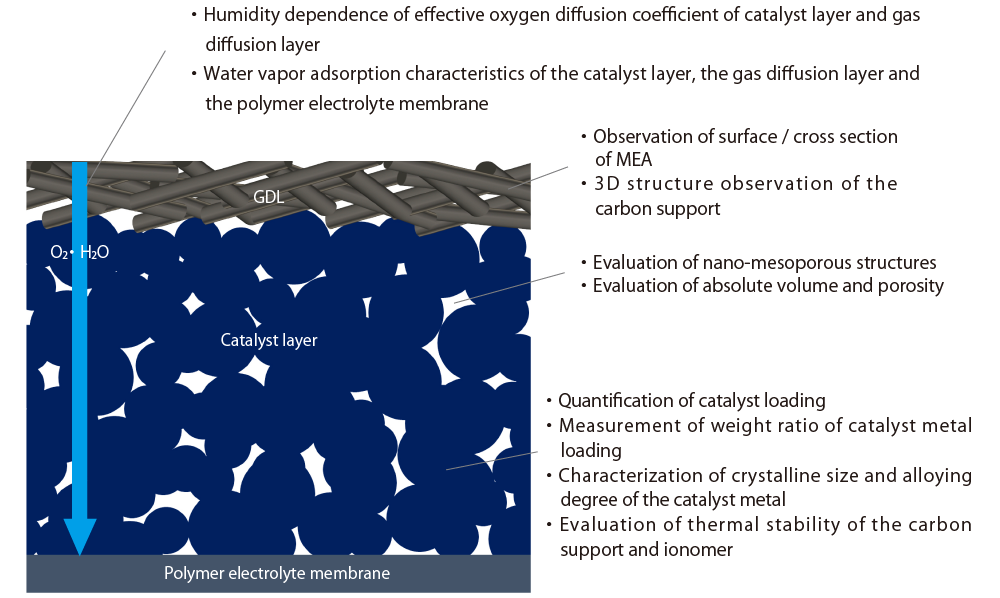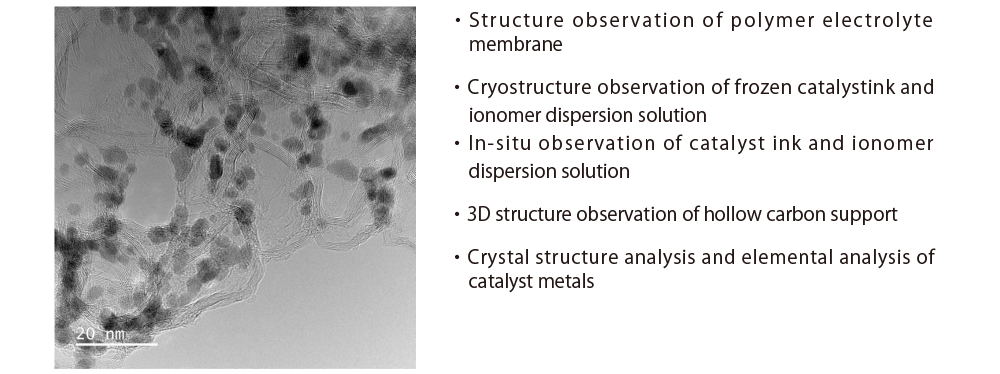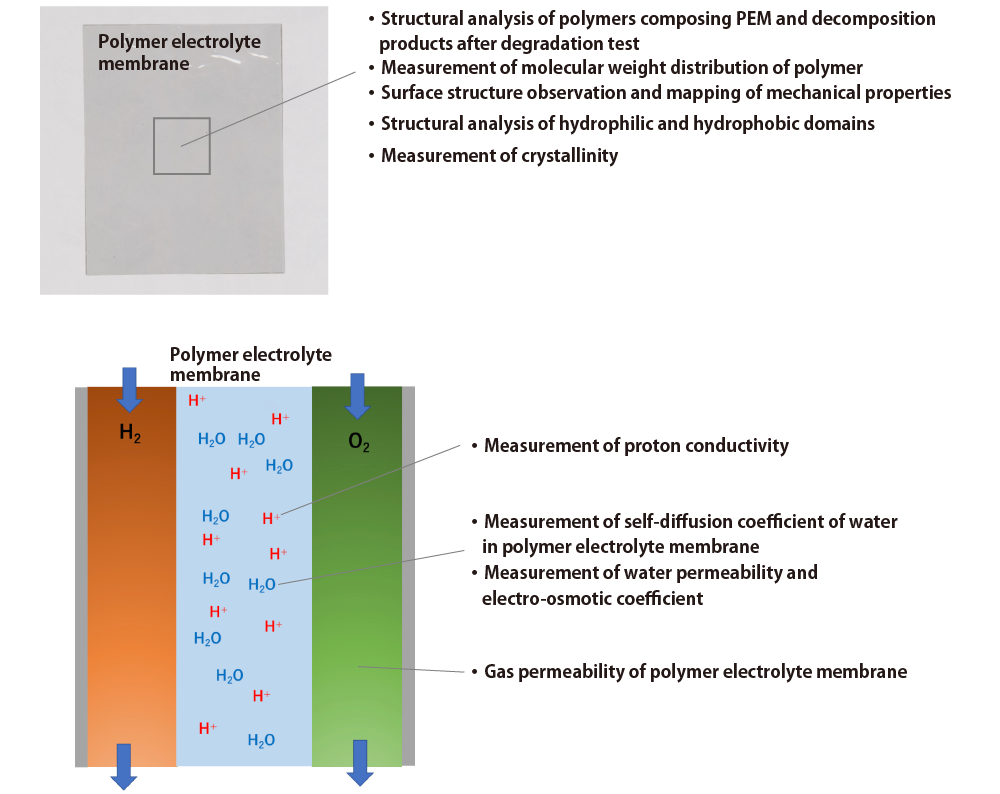Material Properties and Characterization
Catalyst Layer
Evaluation
Various evaluations and observations are conducted on the catalyst layer in the MEA.Structural observation by scanning electron microscope (SEM) and transmission electron microscope (TEM) and nitrogen gas adsorption measurement can be used to evaluate nano-macropores in the catalyst layer.Thermogravimetry (TG) and X-ray fluorescence spectrometry (XRF) can also be used to quantify the amount of catalyst supported and the catalyst metal in the catalyst layer, and various evaluation methods are used to evaluate oxygen diffusion and steam adsorption characteristics in the catalyst layer.

Catalyst and Electrolyte
Membrane Observation
Scanning transmission electron microscopy allows observation of various structures such as catalysts and polymer electrolyte membranes. The 3D imaging function can provide a three-dimensional structure information of hollow carbon support with complex porous structures. Polymer electrolyte membranes and ionomers in various states can be observed using specific holders for cryo and liquid samples.

Characterization of PEM
Based on various information such as the molecular structure and molecular weight of polymer electrolyte membranes, various evaluations and analyses are conducted to obtain the degradation behabior of polymer electrolyte membranes after testing. Material transport properties such as the movement of H+ and water in electrolyte membranes which significantly impacts on fuel cell performance, gas permeability, and mechanical properties such as tensile tests and dynamic viscoelasticity are also evaluated.


